#Global Covid-19
Text
“Mystery virus” getting everyone sick… …. It’s COVID
Link
#covid 19#covid#long covid#covid isn't over#mystery virus#the flu#rsv#covid symptoms#who would’ve thought that a global pandemic has lasting and persistent effects for YEARS#😑#we’re doomed
8K notes
·
View notes
Text
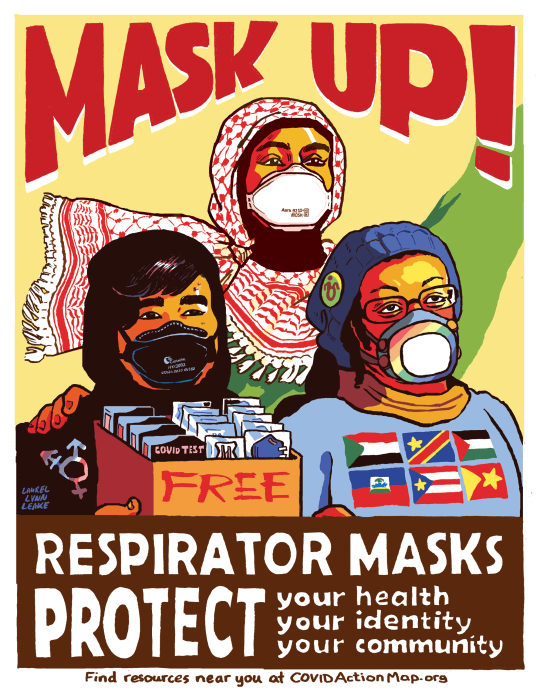
MASK UP FOR GLOBAL LIBERATION
Protect your community by wearing N95s and KN95s when meeting indoors or in crowds! The more of us mask up, the less we get sick, the harder it is for police to surveil us, and the safer we make our shared spaces for our disabled and immuno-compromised comrades and loved ones.
Get started by finding local mask resources on the global COVID Action Map (you can also submit groups to be added). If you have the means, donate masks and tests to your local orgs and encourage accessibility so we can ALL join the fight (bringing in interpreters/translators and medics, ensuring accessibility for wheelchairs/mobility devices, offering child care, filtering the air indoors, setting up virtual options etc).
UPDATE: Download this 8.5"x11" poster for free on itch.io to print and distribute! Includes files suitable for color, black and white, and risograph printing. Any donations will go to printing costs, or buying masks for my local mutual aid groups.
Pandemics have no borders, and all our struggles are united!
#covid 19#covid isn't over#free palestine#free sudan#free haiti#free the congo#free tigray#free puerto rico#global liberation#community care#covid cautious#protest resources#illustration
4K notes
·
View notes
Text
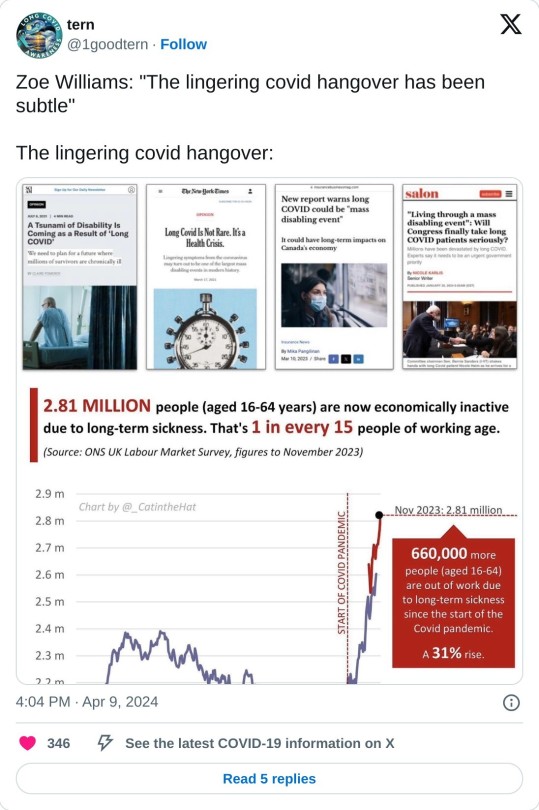
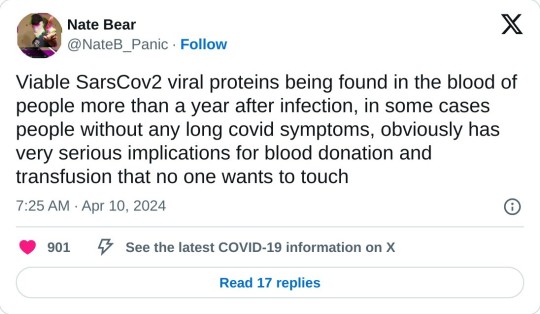
#current events#current news#covid#long covid#covid 19#covid isn't over#covid conscious#pandemic#wear a mask#mask up#science#medicine#healthcare#medical industry#medical study#global news
123 notes
·
View notes
Text
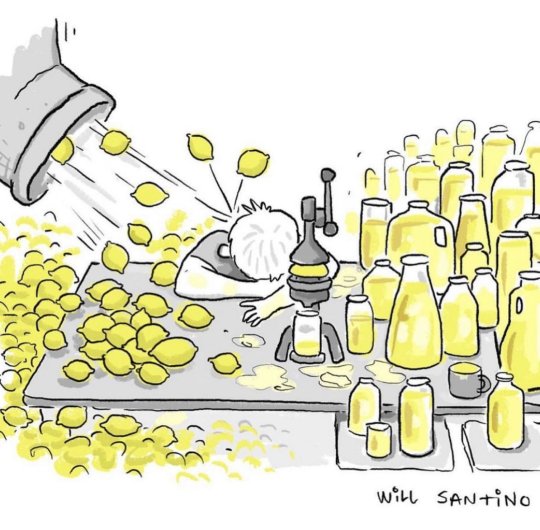
"PUT THIS IN THE HISTORY BOOKS FOR 2020-202(2)."
l Will Santino l MichellCClark
#life#pandemic#covid 19#coronavirus#conflicts and war#natural disasters#cartoon#climate change#global issues#art#cartoons#economic crisis#will santino#family problems
3K notes
·
View notes
Text
I gotta say, the Titan submersible DID have several trips to the Titanic without imploding.
Now, using American pandemic logic, that means that the majority of trips were FINE and you have NOTHING TO WORRY ABOUT.
So go ahead. Take a dive. Statistically you'll be safe. 🤷♀️ It's science.
#titan#submersible#titanic#america#murica#science#pseudoscience#physics#statistics#global pandemic#coronavirus#covid 19#anti intellectualism
187 notes
·
View notes
Text
H5N1: What to know before fear spreads
What is H5N1?
H5N1 is a 1996 strain of the Spanish or Avian Flu first detected in Chinese birds before spreading globally across various avian species. H5N1 is similar to H1N1, but spreads slower and has a much higher mortality rate.
H5N1 may also be referred to as Influenza A. The American Association of Bovine Practitioners has seen fit to rename H5N1 to Bovine Influenza A Virus, or BIAV, and are encouraging others to use the same terminology.
I would not be surprised if the colloquial name among the public becomes Bovine Flu or American Flu in the coming months, and may be referred to as the Chinese Flu by the same folks who took the spark of the SARS-CoV-2 (COVID-19) pandemic as an excuse to be publicly racist to East Asian people without social repercussions.
BIAV is a virus, meaning that it is a (probably) non-living packet of self-replicating infectious material with a high rate of mutation. BIAV is structured similarly to SARS-CoV-2, having a packet of infectious material encased in a spherical shell with a corona, or crown, of proteins that can latch to living cells to inject RNA.
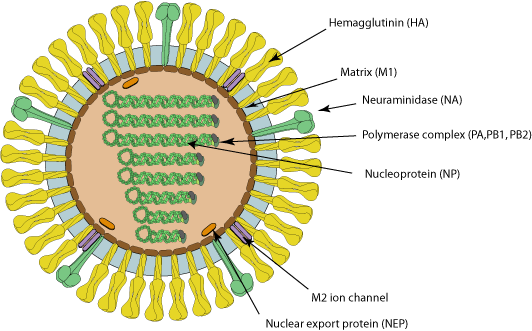
Image source with interactive model: ViralZone - H5N1 subtype
What is the history of BIAV?
In 1996 and 1997, an outbreak of BIAV occurred among poultry and infected 18 people in Hong Kong, 6 of which died. This seemingly isolated incident then infected ~860 people with a >50% death rate.
At the time, BIAV was known as Highly Pathogenic Avian Influenza, or HPAI, and killed nearly 100% of chickens within a 48 hour period.
From 2003 to 2005, continual outbreaks occurred in China and other East Asian countries, before spreading to Cambodia, the Netherlands, Thailand, and Vietnam.
From 2014 to 2016, it began being detected in American fowl, as well as mutating the H5N6 (lethal in birds, no human to human transmission) and H5N8 (largely spread through turkeys, ducks had immunity) viruses.
BIAV has since evolved into a clade known as 2.3.4.4b, and was first detected in 2021 in wild American birds. This then caused outbreaks in 2022 among wild and domesticated birds (such as chickens) alike, but was largely being overshadowed by the pressing SARS-CoV-2 pandemic at the time.
From 2022 to 2023, it was observed to be spreading among various mammals, including humans. Now, in 2024, we're having the most concerning rapid outbreak of BIAV since 2003.
BIAV is known to spread from mammal to mammal, particularly between cows and humans. BIAV may also be spread from cow to cow (highly likely, but not confirmed - this is likely the reason the virus has spread to Idaho from Texan cattle), and is known to be lethal to domestic cats and birds within 48 hours.
How does BIAV spread?
BIAV spreads through fomites - direct contact with infected animals or infected surfaces and then touching parts of your face or other orifices - as well as through airborne particulates, which may be inhaled and enter the sinuses and lungs.
BIAV is known to spread through:
Asymptomatic
Ducks, geese, swans, various shorebirds
Symptomatic, may be lethal
Foxes, bears, seals, sea lions, polar bears, domestic cats, dogs, minks, goats, cows, (potentially human to human, but unconfirmed - there have only been 8 potential human to human cases in 2024).
How can I protect against BIAV?
As BIAV is a type of Influenza A, existing protocols should do fine.
Current recommendations are to wash your hands vigorously after interacting with birds (I would also recommend doing this with mammals), avoid touching your face or other open orifices, and wear N95 masks.
Avoid sick or dead animals entirely - I would also recommend reporting them to your local Animal Control or veterinary centre and warning them about the infection risk. People who work with animals are recommended to also wear full PPE such as N95 masks, eye protection, gloves, and partake in vigorous hand washing.
If you suspect you've caught BIAV, seek medical attention immediately. Existing medications such as oseltamivir phosphate, zanamivir, peramivir, and baloxavir marboxil can reduce BIAV's ability to replicate.
Standard flu shots will not protect against BIAV. Remember - symptoms of BIAV may not manifest for between 2 to 8 days, and potentially infected people should be monitored for at least 10 days.
How far has BIAV spread?
BIAV is currently a global virus, though the current infection location of note is the United States.
Image Key:
Dark red - Countries with humans, poultry and wild birds killed by H5N1
Deep red - Countries with poultry or wild birds killed by H5N1 and has reported human cases of H5N1
Light red - Countries with poultry or wild birds killed by H5N1
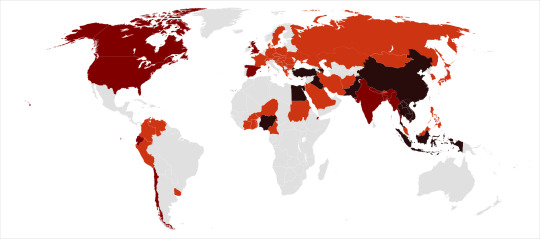
Image source: Wikipedia - Influenza A virus subtype H5N1 - File: Global spread of H5N1 map
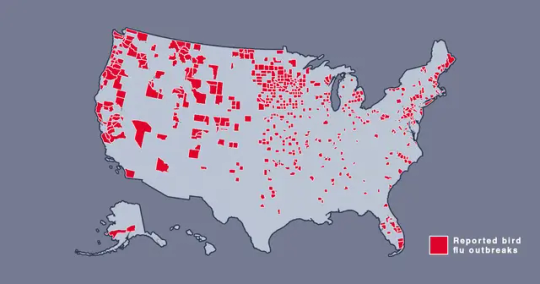
Image source: Metro.co.uk - Map shows where bird flu is spreading in US amid new warning - File: The Centers for Disease Control and Prevention’s H5N1 bird flu detections map across the United States
Should I be afraid?
You needn't be afraid, just prepared. BIAV has a concerningly high lethality, but this ironically culls its spread somewhat.
In the event human to human transmission of BIAV is confirmed, this will likely mainly affect marginalized communities, poor people, and homeless people, who are likely to have less access to medical care, and a higher likelihood of working in jobs that require frequent close human contact, such as fast food or retail jobs.
Given the response to SARS-CoV-2, corporations - and probably the government - may shove a proper response under the rug and refuse to participate in a full quarantine, which may leave people forced to go to work in dangerous conditions.
If this does spread into an epidemic or pandemic, given our extensive knowledge about Influenza, and the US having a backup vaccine for a prior strain of H5N1, a vaccine should be able to be developed relatively quickly and would hopefully be deployed freely without charge - we won't have to worry about a situation like The Stand.
Wash your hands, keep clean, avoid large social gatherings where possible, wear an N95 mask if you can afford them (Remember: Cloth masks are the least protective, but are better than nothing. If you can't afford N95 masks, I recommend wearing a well-fitted cloth mask with a disposable face mask over it to prevent pneumonia from moisture buildup in the disposable mask), support the disabled, poor, and homeless, and stay educated.
We can do better this time.
Further things to check out:
YouTube: MedCram - H5N1 Cattle Outbreak: Background and Currently Known Facts (ft. Roger Seheult, M.D.)
Wikipedia - Influenza A virus subtype H5N1
Maine.gov - Avian Influenza and People
CDC.gov - Technical Report: Highly Pathogenic Avian Influenza A(H5N1) Viruses
Wikipedia - H5N1 genetic structure
realagriculture - Influenza infection in cattle gets new name: Bovine Influenza A Virus (BIAV)
#H5N1#bird flu#avian flu#bovine flu#BIAV#pandemic#epidemic#COVID 19#coronavirus#spanish flu#long post#text post#no id#undescribed#news#politics#us news#us politics#american news#american politics#world news#global news#global politics#world politics#lgbt#lgbtq#queer#trans#communist#socialist
31 notes
·
View notes
Text
#acadia national park#apex predator#biodiversity#birds#candice gaukel andrews#climate change#conservation#covid 19#ecotravel#environment#glacier national park#global warming#human-wildlife conflict#mammals#national parks#natural habitat adventures#nathab#natural habitats#nature#red fox#science#science and environment#scientific research#trails#us national parks#wild#wildlife#wildlife corridors#world wildlife fund#wwf
116 notes
·
View notes
Text
Big events in ableism in 2022:- worldwide efforts to sweep the COVID-19 pandemic under the rug whilst another 1.2 million people died, a cost of living crisis that left many disabled people unable to afford basic costs like food and energy bills, further demonstrations of how climate change will endanger disabled people's lives and the continuing impact of an inhumane and murderous welfare system in the UK.
What online ableism discourse chose to focus on in 2022 instead:- arguing with a union cat on Twitter over the right to exploit low-paid workers in companies that were never designed to serve our needs, making excuses for not reading beyond social media and why disabled people working for bomb factories is good actually.
#ableism#social murder#climate change#disability movement#uk politics#global politics#covid-19#cost of living crisis
52 notes
·
View notes
Text

#mendezilustracion#almeriaartistica#art#illustration#artists on tumblr#illustrator#ilustracion#illustrators on tumblr#dibujo#almeriaart#masoneria#masonería#covid#covid 19#globalism#globalization#globalist#plandemia#plandemic#vacunas#vacuum#vaccine#coronavirus#covid isn't over#gobierno#stop censorship#blackrock#billgates
2 notes
·
View notes
Text
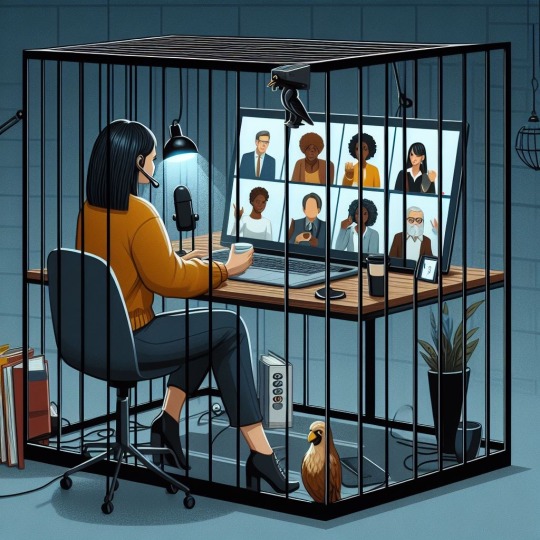
Time to bring humanity back to the classroom
COVID 19 has had a profound effect. It really goes without saying. But I am not talking about the heart-shattering loss of life or the cabin fever inducing 3 years we spent locked in our homes. I am talking about the way business is conducted and how foreign language training has evolved here in Japan. With an increased acceptance of video meeting software such as Zoom, Teams or Meet, the classroom shifted into the virtual world as well.
Companies were forced to move the office to people's homes while the pandemic raged and after companies grew to accept that style, many have stuck to Work From Home. Nikkei Asia estimates that nearly 40% of workers are still doing a hybrid style of work (link), saving transportation and even electricity costs for businesses. This shift to video meetings also impacts on the number of business trips as communication can be achieved for a fraction of the cost. This research positively talks about how 64% of companies still find business travel important, but that means that 36% don't.
Of course, what I am leading up to here is that this has impacted the general attitude towards studying foreign languages, particularly English. More private students or companies are turning to more reasonably costing online English training meaning there has been a step back from the beneficial environment of face-to-face English lessons. Aside from the obvious lack of technical issues that sometimes crop up, there are many benefits to a more intimate training environment. A teacher can have quicker reaction times to questions or problems and has a better capability of reading learners' body language. There is a better sense of connection between all members when you are in a live environment, with more live tools at the teacher's disposal. Last, but not least, there are less chances of succumbing to distractions such as pets, children or that temptation to turn the TV on. This website also talks about motivation and focus as a couple of benefits of being in a classroom as some other potential benefits.
Companies offering English training need to embrace a commitment to quality lessons with practical contents set up in a way that is enjoyable for the students. And most importantly, we need to bring the humanity back to the English study environment and get back in the same room. The teacher needs to work closely with the students to help them realize their goals and use all the tools and signs at their disposal. This is at the heart of what Lowrey Global Consultants strives to do.
#japan#language#training#efl#English study#globalization#global#studying#online#classroom#face-to-face#international#covid 19#Coronavirus#post pandemic
2 notes
·
View notes
Text
CDC kills
wear a mask, test often
we protect us
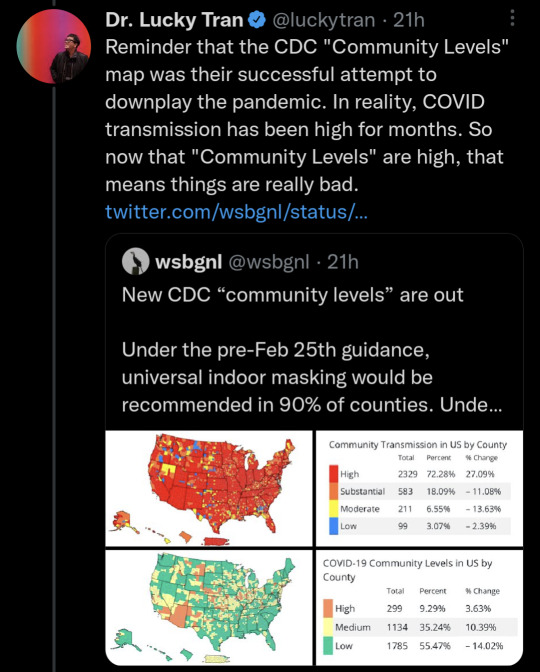
#covid#covid19#covid isn't over#covid 19#covid is not over#pandemic#global pandemic#plague#fuck the cdc#cdc#cdc kills#mask#gas mask#wear a mask#mask up#we protect us#public health
20 notes
·
View notes
Text
Looking Into 2024
2023 is coming to an end,so I would like to tell you 20 different things, the good and the bad
The Good
1. Elemental will win the Oscar. (Isn’t that exciting?)
2. Steamboat Willie will enter public domain.
3. Gemini Ultra is released by Google.
4. A global agreement on plastic pollution.
5. Chang'e lunar sample will return mission
6. The first crewed flight of NASA's Orion spacecraft
7. Indonesia gets a new capital city
8. Paris hosts the summer Olympics
9. The Lion King will turn 30.
10. The Incredibles will turn 20.
The Bad
1. Warner Bros. Discovery will buy Paramount Global
2. There will be a recession, hitting poor Joe Biden so hard, that Donald Trump will win. (Let's stop The Simpsons' Trump wins 2024 from coming true!)
3. There will be AI news anchors on television. (News anchors are getting lazy.)
4. The DVD will become obsolete.
5. The Doomsday Clock will tick closer to midnight.
6. Global carbon emissions will increase.
7. Average world temperatures will increase relative to 2023.
8. No one will put artificial intelligence as a threat to humanity for the doomsday clock.
9. Putin will remain president in Russia.
10. COVID-19 will last forever.
#2024#future predictions#steamboat willie#elemental#the lion king#the incredibles#dvds#ai#donald trump#warner bros discovery#paramount global#doomsday clock#vladimir putin#chang'e#croatia#the olympics#covid 19#indonesia#joe biden#recession
4 notes
·
View notes
Text

screams in fuck american hypercapitalism
#covid isn't over#covid 19#wtf joe biden#for once stop appealing to the hedgefund class#i mean fucking hell#it is a global pandemic#not a new burger chain opening#us politics
15 notes
·
View notes
Link
#global development#global health#coronavirus#infectious diseases#vaccines and immunisation#article#COVID-19#capitalism is violence#colonization#colonialism#imperialism#health news#pandemic
24 notes
·
View notes
Text
How Increased Surveillance by the China Government during the Global COVID-19 Pandemic Affects Online Communities?

In the wake of the global COVID-19 pandemic, governments worldwide, including China, intensified surveillance measures to curb the virus's spread. In this context, China's implementation of stringent surveillance, notably through Health Code Apps, has raised profound concerns about its impact on online communities. As facial recognition and data collection become intrinsic to daily life, the potential repercussions on digital spaces and the people within them demand careful examination. This discussion delves into the multifaceted consequences of increased surveillance by the Chinese government and its tangible effects on the dynamics of online communities.
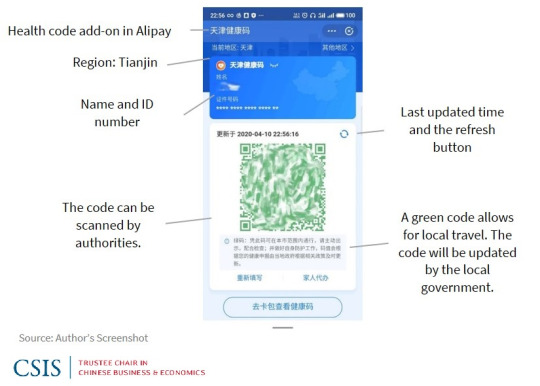

Privacy Erosion
In response to the global COVID-19 pandemic, various countries implemented measures to track and control the virus's spread, introducing tools such as contact tracing apps (Ojokoh et al., 2022), temperature checks (Qu & Lv, 2021) and travel restrictions (Burns et al., 2021). Simultaneously, In China, where stringent surveillance measures were already in place, the government leveraged technology to an even greater extent, using facial recognition and health QR codes to monitor citizens' movements. This involved the deployment of a series of applications known as "Health Code Apps," which have raised concerns about privacy erosion, particularly regarding the use of health code applications. Online communities are not immune to this erosion, as the data collected through these apps includes personal information, health status, and location details. This data is then utilized to assign one of three colours, indicating the user's health status (Ramos, 2020). However, Data is funnelled to entities like the provincial Big Data Bureau, Alibaba, and the telecommunications department, expanding the accessibility to user information, ranging from personal details to health status, location, and device specifics. This centralized model amplifies the risks of data aggregation and user re-identification, exemplified by the Beijing Health Bao system's data leak in December 2020. The incident exposed the photographs, ID numbers, and nucleic acid test information of celebrities, highlighting insufficient safeguards in place (Zhang, 2022). Online communities may find their members exposed to privacy breaches, leading to a chilling effect on open communication and expression within these digital spaces.

Potential for Abuse of Power:
The potential for the abuse of power in the context of surveillance, inadequate transparency and compliance measures is a significant concern for online communities as well. This concern is exemplified by recent events in Henan Province, where health code apps were allegedly manipulated to suppress protests related to potential losses in rural banks on the brink of collapse (Zhang, 2022). The legitimacy of these health code apps faced a setback as city officials marked over a thousand individuals as red, restricting their entry into Zhengzhou City and highlighting the vulnerability of such systems to misuse (Zhang, 2022). This incident underscores the potential for health code apps, initially designed for public health purposes, to transform into tools of surveillance, allowing government agencies to exert control under the guise of maintaining public health. The lack of stringent transparency requirements heightens the risk of these technologies being misused for purposes beyond their intended scope, which negatively impacts the freedom of expression within online communities. As governments exploit surveillance tools to monitor and influence online discussions, online communities may face challenges related to censorship and control, further emphasising the interconnected nature of surveillance concerns and their impact on digital spaces.
Technological Dependence:
Embracing extensive surveillance often involves a reliance on advanced technologies. In the case of Health Code Apps, facial recognition technology is integrated into residential area access control systems, permitting entry only to those with a green code (Ramos, 2020), which has implications for online communities. This reliance on advanced technologies may neglect more human-centric approaches to online interaction, potentially excluding or disadvantaging certain members of digital communities. As surveillance technologies become integral to online platforms, the balance between security measures and preserving the inclusivity and diversity of online communities becomes a critical consideration.
Trust Deficit:
The colour-coded system assigned by health code applications has far-reaching consequences for millions of users in their interactions within both physical and online communities. Requiring individuals to display their health codes in public transportation, shopping malls, markets, and other public places may contribute to a trust deficit between citizens and the online platforms they engage with (Jao et al., 2020). Users within online communities may question the motives behind such surveillance measures, especially if their personal information is shared without their knowledge. Rebuilding trust within online communities, once eroded by mandatory health code reliance, poses a considerable challenge, impacting the dynamics of digital social spaces.
In conclusion, the surge in surveillance by the Chinese government amid the global COVID-19 pandemic undeniably leaves a lasting imprint on online communities. The colour-coded system mandated by health code applications not only infiltrates public spaces but also infiltrates the very essence of digital interactions. This imposition triggers a tangible trust deficit within online communities as individuals question the motives behind these surveillance measures. Rebuilding trust within these virtual spaces, essential for vibrant and open communication, becomes a formidable challenge in the aftermath of mandatory health code reliance. The delicate equilibrium between bolstering security measures and safeguarding the inclusivity of online communities emerges as the linchpin for preserving the dynamic and diverse nature of these digital spaces. In essence, the impact of increased surveillance by the Chinese government is intimately intertwined with the well-being and resilience of online communities.
"Considering the implications of increased surveillance by the Chinese government during the global COVID-19 pandemic on online communities, we'd like to hear your perspective. How do you perceive the effects on privacy erosion, potential abuse of power, technological dependence, and the trust deficit within these digital spaces? Share your insights and cast your vote below."
Reference List
Burns, J., Movsisyan, A., Stratil, J. M., Biallas, R. L., Coenen, M., Emmert-Fees, K., Geffert, K., Hoffmann, S., Horstick, O., Laxy, M., Klinger, C., Kratzer, S., Litwin, T., Norris, S. L., Pfadenhauer, L. M., Von Philipsborn, P., Sell, K., Stadelmaier, J., Verboom, B., . . . Rehfuess, E. (2021). International travel-related control measures to contain the COVID-19 pandemic: a rapid review. The Cochrane Library, 2021(3). https://doi.org/10.1002/14651858.cd013717.pub2
Jao, N., Cohen, D., & Udemans, C. (2020). How China is using QR code apps to contain Covid-19. TechNode. https://technode.com/2020/02/25/how-china-is-using-qr-code-apps-to-contain-covid-19/
Ojokoh, B. A., Aribisala, B. S., Sarumi, O. A., Gabriel, A. J., Omisore, O. M., Taiwo, A. E., Igbe, T., Chukwuocha, U. M., Yusuf, T. A., Afolayan, A., Babalola, O., Adebayo, T., & Afolabi, O. (2022). Contact Tracing Strategies for COVID-19 Prevention and Containment: A scoping review. Big Data and Cognitive Computing, 6(4), 111. https://doi.org/10.3390/bdcc6040111
Qu, J., & Lv, X. (2021). The response measures to the coronavirus disease 2019 outbreak in China. Open Forum Infectious Diseases, 8(2). https://doi.org/10.1093/ofid/ofab014
Ramos, L. F. (2020). Evaluating privacy during the COVID-19 public health emergency. The ACM Digital Library, 176–179. https://doi.org/10.1145/3428502.3428526
Zhang, X. (2022). Decoding China’s COVID-19 health code apps: the legal challenges. Healthcare, 10(8), 1479. https://doi.org/10.3390/healthcare10081479
4 notes
·
View notes
Text
That lesson is that we are a family, undivided by religion or race or geographical proximity. We are an international community. But it is this notion of humanity as family that is being attacked right now, from the terrified women and children in basement shelters across Ukrainian cities to women’s rights activists in Afghanistan, human rights activists in Syria, climate activists in Brazil and LGBTQ+ activists in Bangladesh. We have entered a new era, with massive global challenges ahead of us. We cannot deal with these challenges by reviving the forces of isolationism, tribalism and a me-first approach. Likewise, we cannot be single-issue people: if you care about climate injustice, you also need to care about gender injustice. Women and children are affected disproportionately by environmental destruction, and whenever there is massive displacement, there is also an alarming increase in sexual violence and gender discrimination. If you care about gender inequality, you should also care about racial inequality, class inequality, regional inequality and so on. Unless we connect the dots, nothing will improve.
— Elif Shafak on the legacy of lockdown: The pandemic made it clear there is such a thing as society
#elif shafak#elif shafak on the legacy of lockdown#current events#covid 19#pandemic#lockdown#social justice#activism#sociology#global warming#climate change#feminism#misogyny#racism#lgbt#classism#oppression#inequality
4 notes
·
View notes